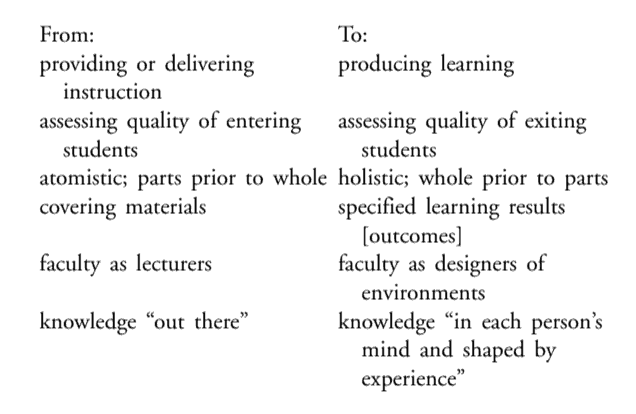This post is part of a series wherein I blog my way through studying for the doctoral certification exam in the Communication, Media, and Learning Technologies Design Program at Teachers College, Columbia University. Read the first post here.
Full disclosure: Amazon links in this post have my affiliate code built into them. If you follow one and purchase something, I’ll get a small commission. Thanks for supporting Learning, Faith & Media and my other work.
As you’ve probably noticed, I’ve been effusively thanking/citing my colleague Mary Hess as often as I can in these posts. She really is the thinker in religious education who’s been grappling with the implications of media literacy for communities of faith—and in particular, in recent years, making a case for Digital Storytelling and other media-rich learning opportunities in seminaries and churches.
If you care at all about theological education, I highly recommend her Engaging Technology in Theological Education: All That We Can’t Leave Behind. I think several of the chapters are reworkings of earlier journal articles, but Mary Hess journal articles are a joy and not a chore.
Let me walk you through three related articles. The first, “Mirror Neurons, The Development Of Empathy, And Digital Story Telling” (non-paywall conference version here), speaks into the space of hope and anxiety created by popular acknowledgement of the ways digital cultures are changing social practice. Hess briefly surveys recent neuroscientific findings about mirror neurons, which fire in our brains’ motor pathways when we watch someone else do something, especially a goal-oriented activity. She continues
I am writing this article primarily as a way to juxtapose these three lines of inquiry: religious educators’ concerns for developing practices that support health religious identity, neuroscientific observations of the role of mirron neurons in the development of social cognition and empathy, and digital story tellers’ work with media education. I am not suggesting any definitive conclusions, but I would point to the confluence of ideas that appear here …
I also think that this work suggests that there is a balance to be achieved between the legitimate concerns raised by Sherry Turkle [Alone Together], and the optimism of Cathy Davidson [Now You See It]. That balance requires recognizing the crucial role played by practice, and the necessity of intentionally creating learning environments that allow us to “practice the practices” involved in empathic relationship. We ought neither to be drawn solely into “robotic” relationships, nor into blithe disregard for the importance of slowing down and attending to silence, to practices of presence, and so on. (p. 11-12, emphasis mine)
In other words, we might choose other empathy-building practices, but we need to choose something, and the story circle experience is “a process of attending to meaning-making
that [is] significantly contemplative, in the deep sense of that word” (p. 11).
A couple years later, Hess published “A New Culture of Learning: Digital
Storytelling and Faith Formation” in theology journal Dialog. Here the framing zooms in a little more closely on learning in/with digital cultures. She summarizes some of the work of the various super-rad MacArthur-funded digital learning initiatives I’ve probably cited a bit, the most well-known of which is Hanging Out, Messing Around, and Geeking Out, aka HOMAGO. Here’s the table:

The MacArthur work describes cultures where facilitators establish a framework through which learners can explore and express their passions and interests subject to the rules that create the necessary tension in any “playful and yet serious space” (p. 21).
After this many days of me writing about Digital Storytelling, you can probably connect the dots of how it relates to the right-hand side of the chart above. In short, Hess believes it provides one such productively constraining ruleset, and as I said yesterday, its use in church communities is consistent with the view that the work and substance of Christian theology is communication.
A more recent paper still, “Playing our way into complex adaptive action in religious education,” moves beyond Digital Storytelling into gameful learning. But it uses some of the same framing (including Drescher) and theoretical underpinning (Robert Kegan’s work on adult learning—which sounds great, but honestly I can’t be reading anything new at the point…). I mention it here primarily because this paragraph so eloquently gets at what I’ve been trying to say throughout the case-making part of my study work in these posts:
Can we embody religious education that educates within and for specific religious communities, but also and concurrently with and for people who are not part of religious communities? Can we reach people who might have very little interest in, or perhaps even hostility towards, religious institutions? I fear that until and unless religious communities can communicate – in all the rich senses of that word – our integral and inextricable commitments to relationship across, among, within, between and amidst various kinds of difference, we will lose even more ground with a generation of people growing to consciousness within the rich and varied landscapes of the US. (p. 1, emphasis hers)
More than anything I’ve been able to cobble together, this short paragraph captures why I think Digital Storytelling and other forms of playful, production/creativity-oriented, self-motivated, community-based practices need to help us remake religious education / faith formation / spiritual learning
- in the image of today’s culture of learning,
- for our peculiar cultural moment of decreasing religious affiliation and increasing diversity, and
- by imitating a God I believe invites us to a kind of divine practice of both creation and communication.
When, OK. Tomorrow: a crash course (for you and for me) in multimodality.

Hey Kyle! Brother Rumble introduced me to your blog! This is so encouraging! I spend a lot of time frightened and estranged by the “world” created by digital communication. i just started a reading journal blog, dbvinson.blogspot.com. i’d love your feedback and suggestions if you have the time. peace out! come back and visit us at richmond hill! -david
Good to meet you, David. As you might guess, I’ll be a little out of pocket until this test is over (and probably for some catch-up time afterward) but I’ll check out the blog and would love to connect sometime!
thanks Kyle, and blessings on your work!
Kyle, Two things: the right hand side of the HOMAGO table describes the role of the teacher as developed in the early twentieth century by Maria Montessori, and in use in Montessori schools today. Second, the quote above, “Can we embody religious education that educates within and for specific religious communities, but also and concurrently with and for people who are not part of religious communities? Can we reach people who might have very little interest in, or perhaps even hostility to, religious communities?” exactly explains what I have tried to do with my iPad app for children and families, “Who Are You, Jesus?” See whoareyoujesus.com
Hadn’t made either connection, Suzanne, but I like them both!